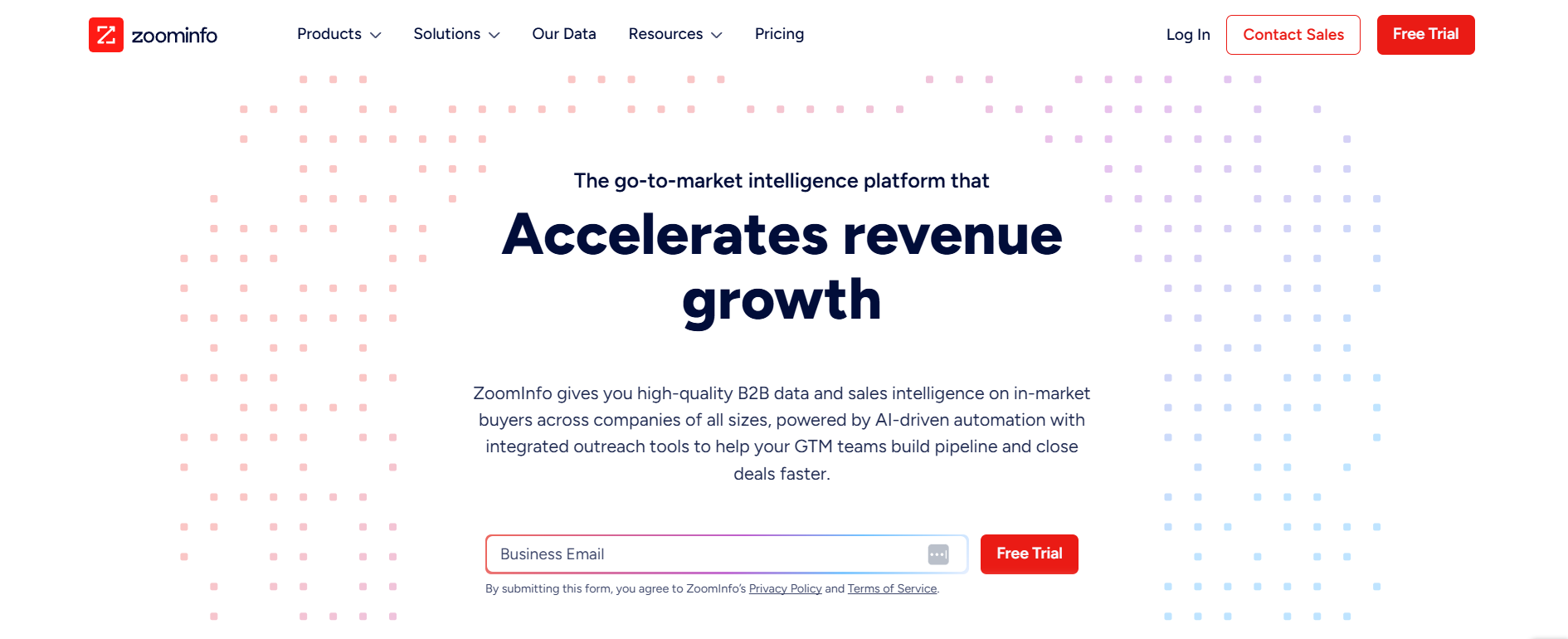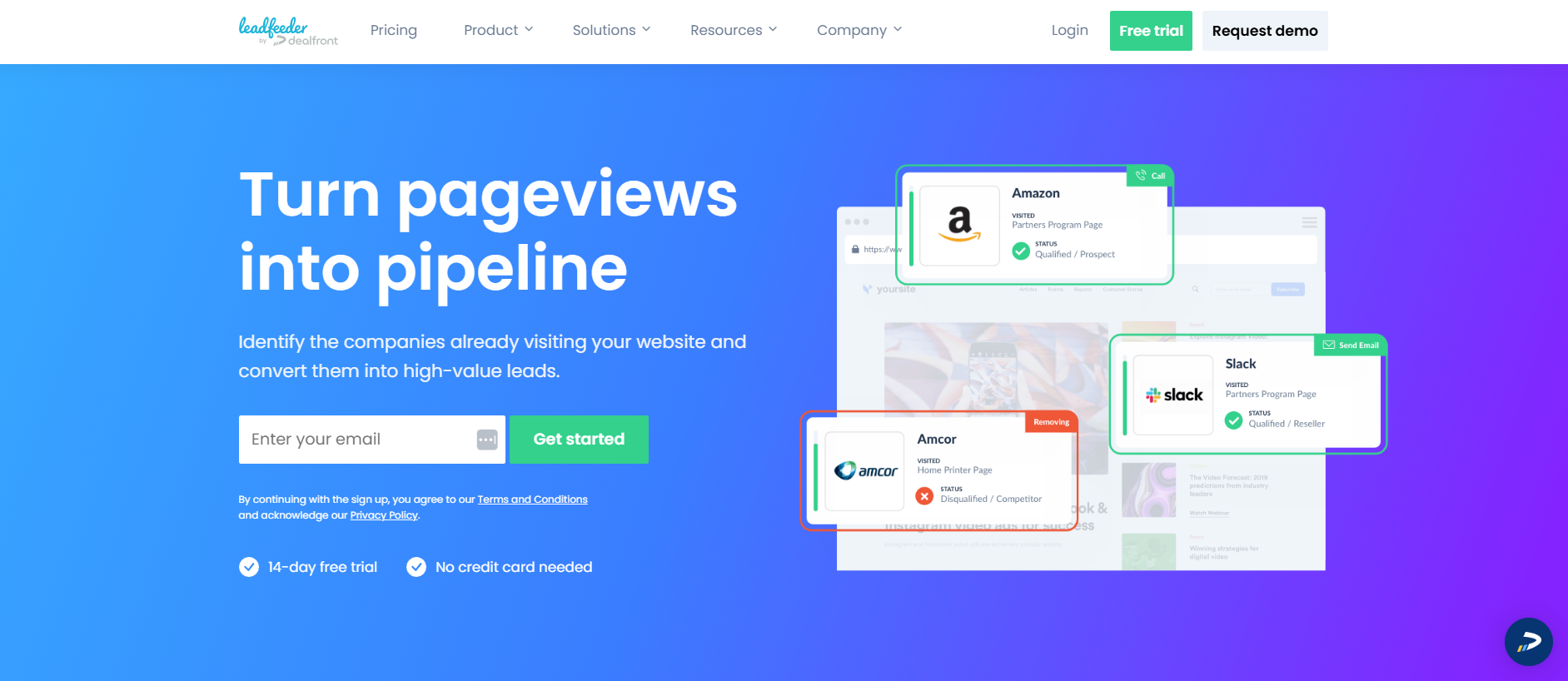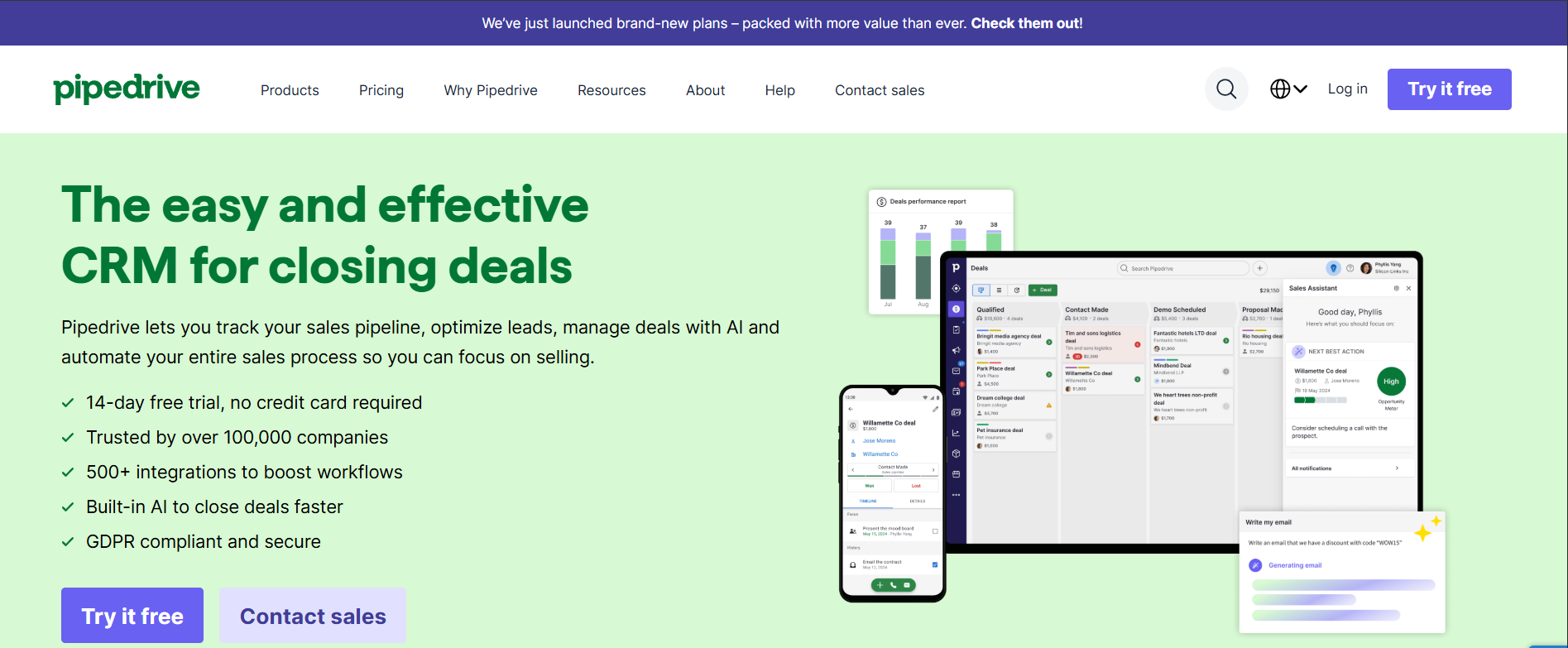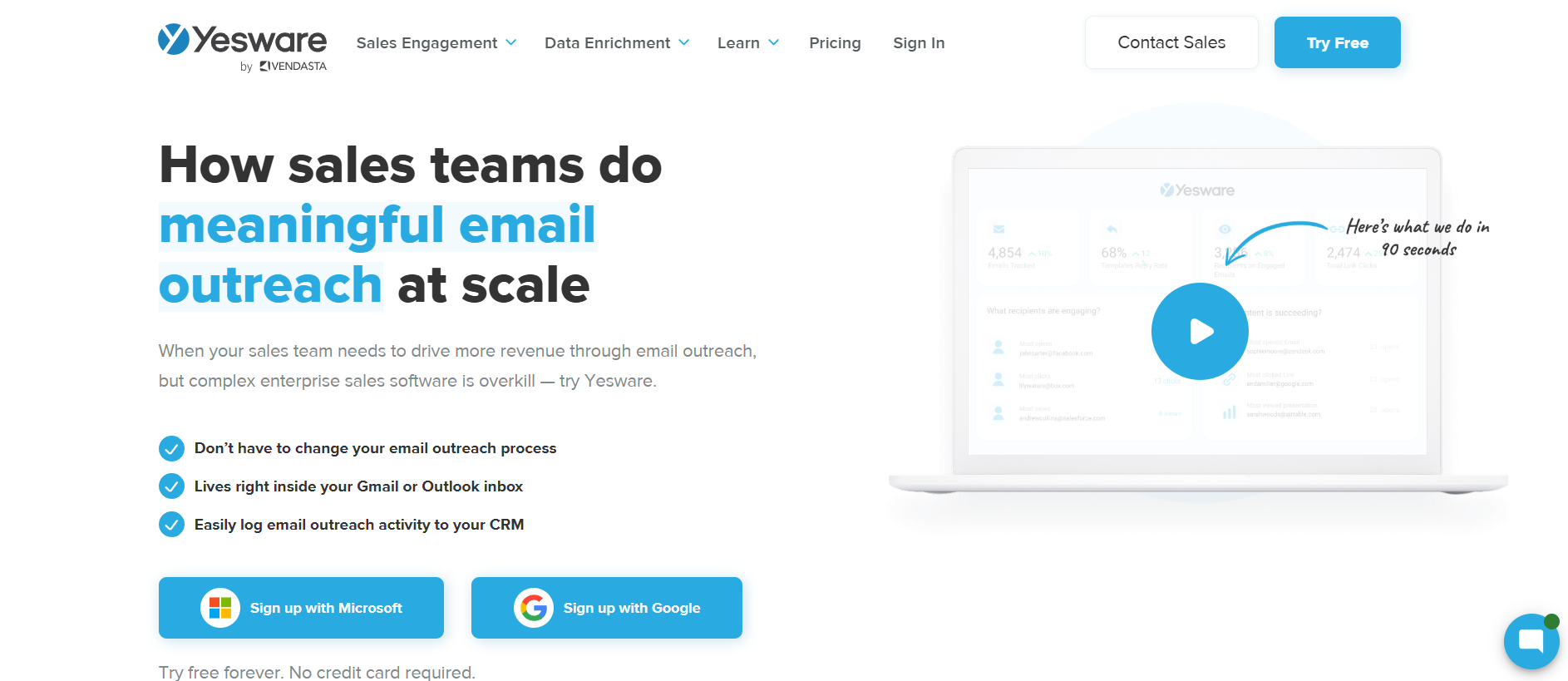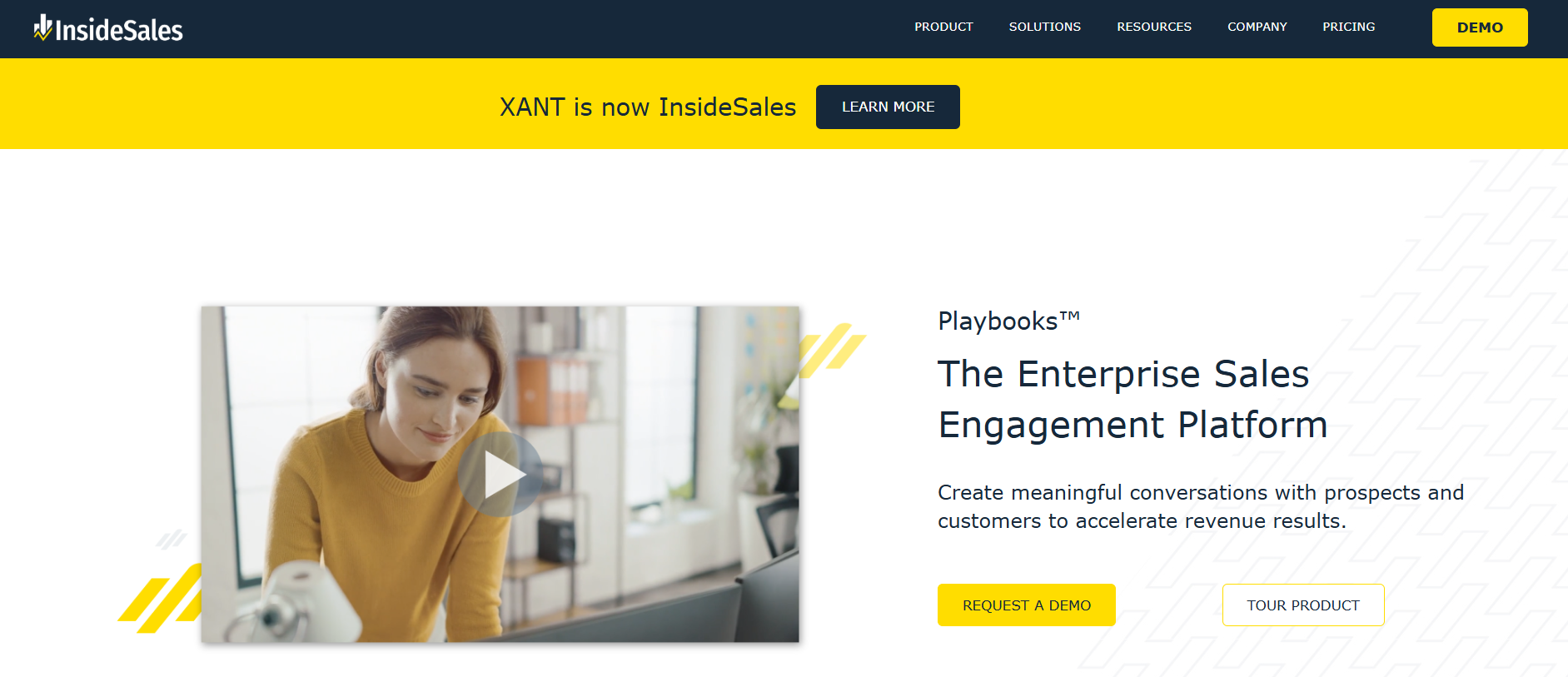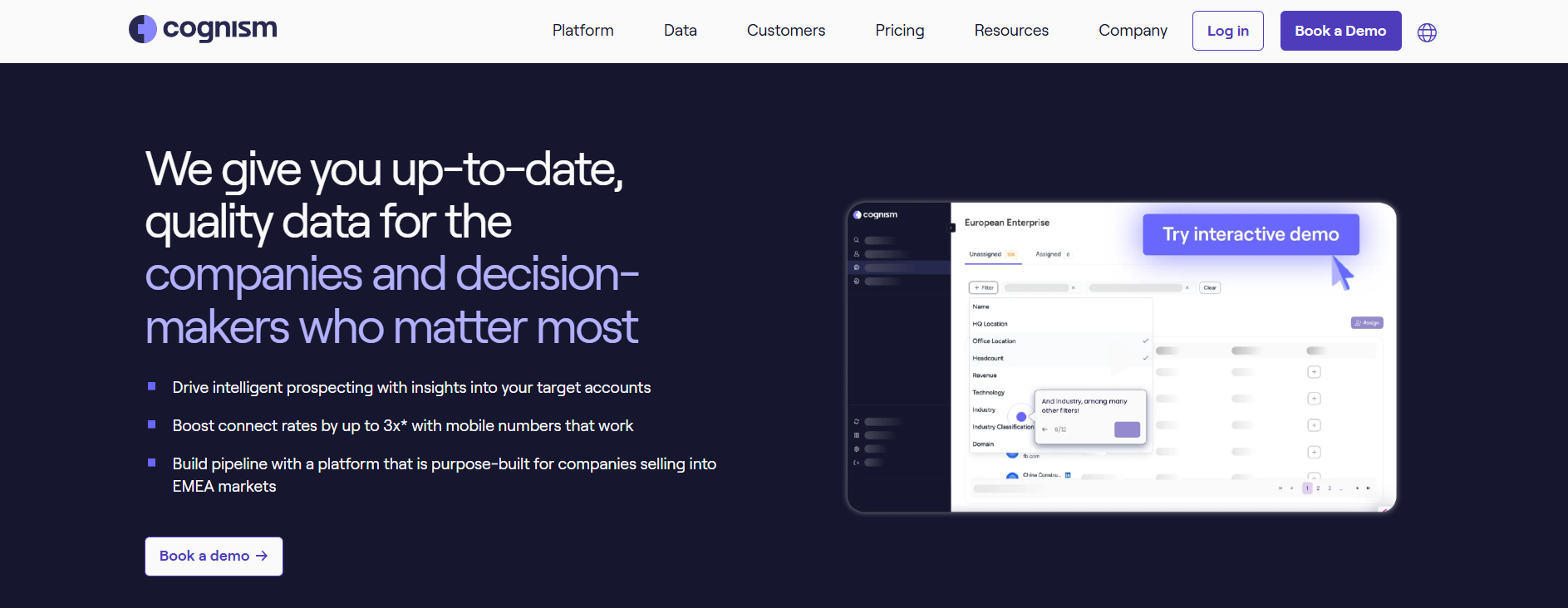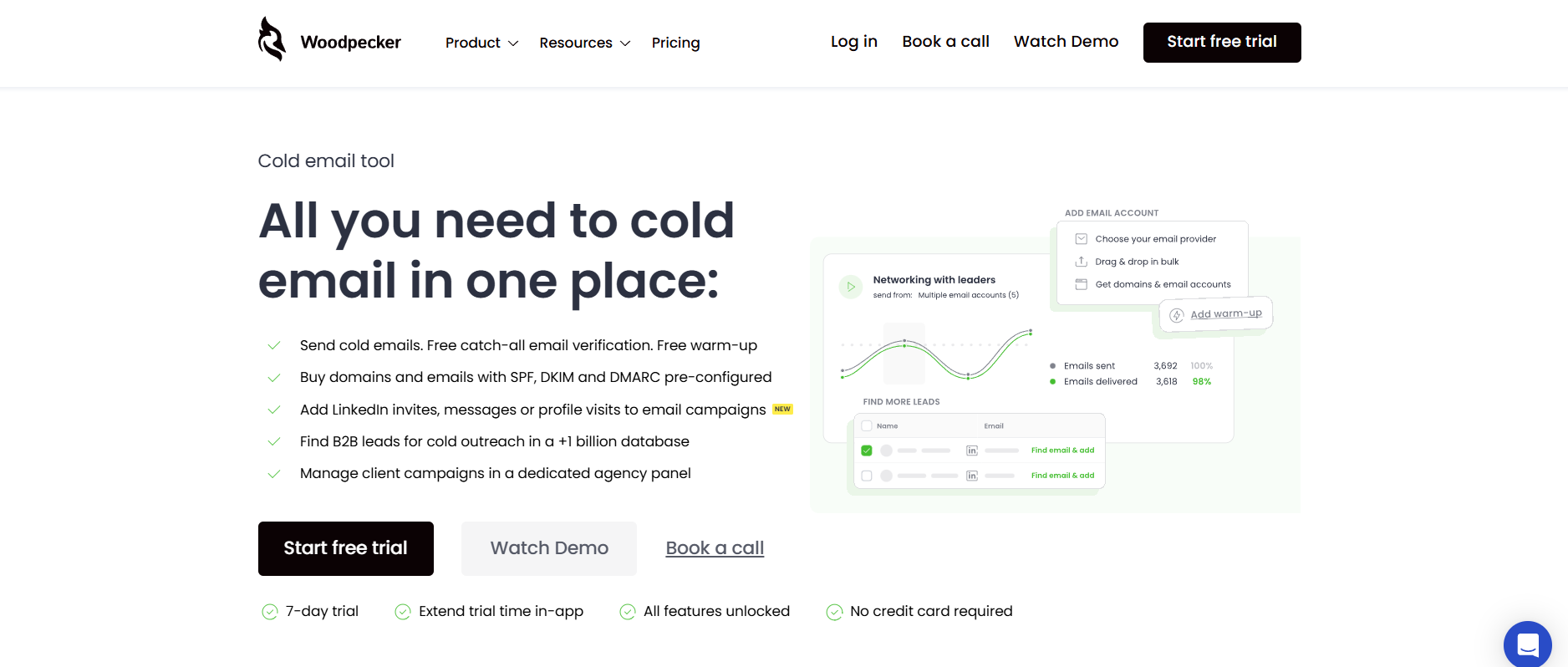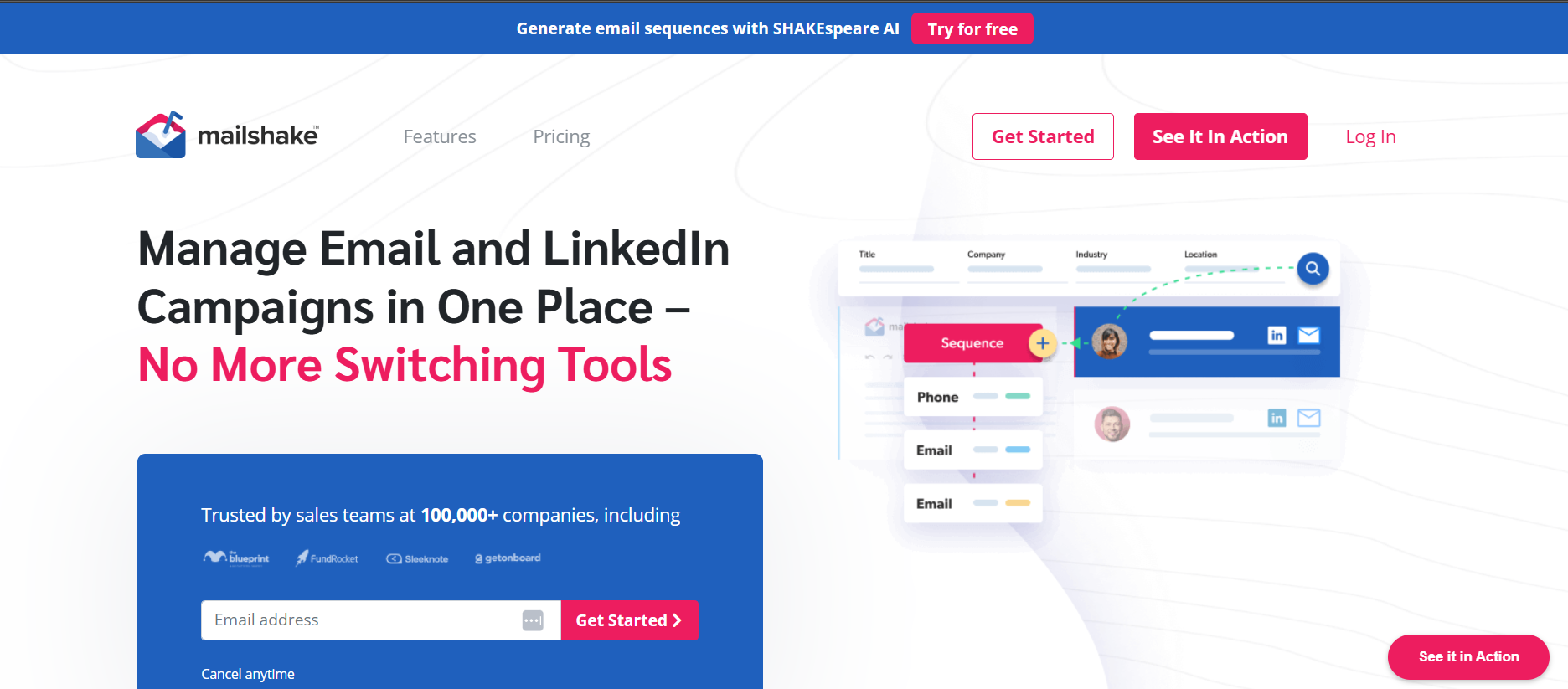Best 20 Sales Prospecting Tools to Prospect Sales in 2025
Best 20 Sales Prospecting Tools to Prospect Sales in 2025
In the ever-evolving landscape of sales, particularly as we approach 2025, the importance of efficient and effective sales prospecting cannot be overstated. This article delves into the realm of sales prospecting tools, highlighting the top contenders poised to revolutionize how sales teams identify, engage, and convert prospects into valuable customers. These tools are indispensable for sales professionals looking to boost their sales, streamline their sales process, and, ultimately, dominate their market.
Introduction to Sales Prospecting Tools
Sales prospecting tools are software applications designed to help sales teams discover the best prospects, research, and connect with potential customers. In today's competitive business environment, these tools are essential for efficient lead generation and effective sales outreach. The right sales prospecting tool can significantly improve a sales rep's productivity, allowing them to focus on nurturing relationships and closing deals rather than spending countless hours on manual data collection and initial outreach. These tools leverage data, automation, and intelligence to streamline the sales process and enhance sales engagement.
What is Sales Prospecting?
Sales prospecting is the process of identifying and initiating contact with potential customers, or prospects. It's a critical stage in the sales funnel, involving research, outreach, and qualification to determine if a prospect is a good fit for the product or service being offered using specific sales techniques. Effective sales prospecting involves using various sales strategies and techniques to engage prospects and move them further down the sales pipeline. This includes leveraging different tools like LinkedIn Sales Navigator, sales prospecting software, and other platforms to gather intelligence and personalize outreach efforts, helping sales teams connect with the right people at the right time.
Importance of Sales Prospecting in 2025
In 2025, the importance of sales prospecting will be amplified due to increasing market competition and evolving customer expectations. Sales teams need to be more efficient and targeted in their outreach efforts. The use of AI sales tools and sales automation will become crucial for identifying high-quality leads and personalizing communication at scale. Sales prospecting platforms will help sales professionals navigate the vast sea of information and connect with prospects who are most likely to convert, ultimately driving revenue growth and ensuring a competitive edge in the market. The top sales prospecting tools will be those that leverage data and AI to provide actionable insights and streamline the entire sales process.
Overview of the Best Sales Prospecting Tools
The market offers a diverse range of sales prospecting tools, each with its unique strengths and capabilities. These include all-in-one sales prospecting platforms, specialized lead generation software, sales intelligence platforms, and automation tools designed to streamline the sales process. From LinkedIn Sales Navigator, a powerful tool for B2B sales prospecting, to various AI sales tools that can analyze data and predict prospect behavior, the options are extensive. Choosing the right sales prospecting tool depends on the specific needs and goals of the sales team, including the size of the team, the target market, and the complexity of the sales process. The 12 best sales prospecting tools and even the top 20 will vary based on business needs.
Top Sales Prospecting Tools in 2025
1. LinkedIn Sales Navigator
Source: Linkedin Sales Navigator
LinkedIn Sales Navigator is LinkedIn's premium sales tool designed to help sales professionals find and connect with prospects on the LinkedIn platform. It offers advanced search filters, lead recommendations, and real-time insights, making it an essential sales tool for B2B sales prospecting. Using LinkedIn Sales Navigator, sales teams can identify potential customers, understand their needs, and engage them with personalized outreach using the best tools on the market.
Pricing: Varies based on plan; typically starts around $79.99 per month.
Pros
Highly effective for B2B sales and lead generation.
Provides detailed prospect information and insights.
Integrates well with other sales tools and CRM systems.
Cons:
Can be expensive for individual users or small teams.
Requires a LinkedIn account and familiarity with the platform.
It may not be suitable for all b2b sales teams.
2. ZoomInfo
ZoomInfo is a comprehensive sales intelligence platform that provides sales teams with access to a vast database of business contacts and company information. It helps sales reps identify and target the right prospects with accurate and up-to-date data. As a sales prospecting tool, ZoomInfo offers advanced search capabilities, sales automation, and lead scoring features to streamline the prospecting process and boost your sales.
Pricing: Finding the right prospecting tool at a reasonable price is essential. Custom pricing based on the number of users and features is crucial for sales teams using various tools on the market.
Pros:
Advanced search and filtering capabilities.
Integrates with various CRM and sales engagement platforms.
Many sales prospecting tools provide insights that can significantly enhance your sales approach.
Cons:
Can be expensive, especially for small businesses trying to implement a b2b prospecting tool.
Data accuracy can vary, requiring regular validation.
3. Hunter.io
Hunter.io is a sales tool focused on finding email addresses associated with specific websites. It helps sales teams quickly locate contact information for prospects within target organizations. By using Hunter.io, sales professionals can efficiently build their sales pipeline and initiate personalized sales outreach. It is a valuable sales prospecting tool for generating leads and improving sales engagement.
Pricing: Free plan available; paid plans start around $49 per month.
Pros:
A simple and easy-to-use interface is vital for sales teams using various tools to find leads.
Provides verified email addresses for target websites.
Offers a free plan with limited features, making it accessible for startups in their outreach tool journey.
Cons:
Limited functionality beyond email address finding.
Accuracy of email addresses can vary.
4. Salesforce Sales Cloud
Salesforce Sales Cloud is a leading customer relationship management (CRM) platform that helps sales teams manage and optimize their entire sales process. It offers a range of features, including lead management, opportunity tracking, and sales forecasting. As an all-in-one sales prospecting tool, Salesforce Sales Cloud helps sales professionals streamline their workflow, improve collaboration, and drive sales growth. The best sales prospecting tools integrate seamlessly with CRM systems like Salesforce to enhance sales strategies and help sales teams manage every stage of the sales funnel effectively.
Pricing: Starts at $25 per user per month (billed annually).
Pros:
Comprehensive CRM platform with a wide range of features.
Highly customizable to meet specific business needs.
Integrates with various third-party sales and marketing tools.
Cons:
Can be complex to set up and manage.
Expensive for small businesses.
5. Outreach.io
Outreach.io is a sales engagement platform that helps sales teams automate and personalize their outreach efforts. It provides tools for creating and managing email sequences, tracking prospect engagement, and scheduling follow-ups. By using Outreach.io, sales professionals can improve their sales engagement, streamline their sales process, and close more deals. It supports sales automation and provides sales reps with the capabilities they need to engage in outbound sales effectively.
Pricing: Custom pricing based on the number of users and features.
Pros:
Powerful sales engagement and automation capabilities.
Helps sales teams personalize and scale their outreach.
Provides detailed analytics and reporting.
Cons:
Can be expensive, especially for small businesses that are looking to discover the best sales prospecting tools.
Requires training and setup to maximize its potential.
6. Apollo.io
Apollo.io is an all-in-one sales intelligence platform that combines lead generation, email automation, and sales analytics. It helps sales teams identify and engage with prospects, automate their outreach, and track their performance. This sales prospecting tool is designed to streamline the sales process and boost your sales by providing actionable insights and automating repetitive tasks. Apollo.io acts as a leading sales prospecting software for sales prospecting.
Pricing: Free plan available; paid plans start around $49 per month.
Pros:
Combines lead generation, email automation, and analytics.
Offers a free plan with limited features.
Integrates with various CRM systems.
Cons:
Data accuracy can vary.
Some features may require higher-tier plans.
7. Clearbit
Clearbit provides sales and marketing teams with real-time data about companies and contacts, enhancing their prospecting efforts. It helps sales reps enrich their existing data, identify new prospects, and personalize their outreach. This sales intelligence platform integrates with various CRM and sales tools, making it easier for sales teams to access and use data to improve their sales engagement and drive revenue growth using these tools. Choosing a sales prospecting tool like Clearbit can help sales professionals optimize their sales strategies and boost their sales performance.
Pricing: Custom pricing based on usage and features.
Pros:
Provides real-time data enrichment and insights.
Integrates with various CRM and marketing automation platforms.
Helps sales teams personalize their outreach.
Cons:
Can be expensive, especially for small businesses trying to implement effective sales tools to find prospects.
Requires careful configuration to maximize its value.
8. Leadfeeder
Leadfeeder is a website visitor tracking tool that helps sales teams identify potential leads based on their website activity. It integrates with Google Analytics to show which companies are visiting your website, providing valuable insights for sales prospecting. By using Leadfeeder, sales professionals can identify potential customers who are already showing interest in their products or services, improving their sales pipeline and increasing their chances of closing deals. It's a top sales prospecting tool for identifying and engaging warm leads. Outbound sales teams can get help with this tool.
Pricing: Free plan available; paid plans start around $79 per month.
Pros:
Identifies companies visiting your website.
Integrates with Google Analytics.
Offers a free plan with limited features.
Cons:
Relies on accurate IP address data.
May not identify all website visitors.
9. Pipedrive
Pipedrive is a sales CRM and pipeline management tool designed to help sales teams visualize their sales process and close more deals. It offers features for lead management, contact management, and sales automation. As a sales prospecting tool, Pipedrive helps sales reps stay organized, track their progress, and prioritize their activities. By using Pipedrive, sales professionals can streamline their sales workflow, improve collaboration, and drive revenue growth.
Pricing: Starts at $12.50 per user per month (billed annually).
Pros:
User-friendly interface and easy to set up.
Visual pipeline management.
Affordable for small businesses.
Cons:
Limited customization options.
May not be suitable for complex sales processes.
10. SalesLoft
SalesLoft is a sales engagement platform that helps sales teams automate and personalize their outreach efforts. It offers features for creating and managing email sequences, tracking prospect engagement, and collaborating with team members. By using SalesLoft, sales professionals can improve their sales engagement, streamline their sales process, and close more deals. This is a valuable sales prospecting tool for sales outreach.
Pricing: Custom pricing based on the number of users and features.
Pros:
Powerful sales engagement and automation capabilities.
Helps sales teams personalize and scale their outreach.
Provides detailed analytics and reporting.
Cons:
Can be expensive, especially for small businesses.
Requires training and setup to maximize its potential.
11. Yesware
Yesware is a sales engagement platform that integrates with email clients like Gmail and Outlook. It provides sales reps with tools for tracking email opens and clicks, creating email templates, and scheduling meetings to optimize their prospecting efforts. By using Yesware, sales professionals can improve their sales engagement, personalize their outreach, and close more deals. This sales tool is designed to enhance productivity and streamline communication with prospects.
Pricing: Starts at $15 per user per month (billed annually).
Pros:
Integrates seamlessly with Gmail and Outlook.
Provides email tracking and analytics.
Offers email templates and scheduling features.
Cons:
Limited functionality compared to more comprehensive platforms.
Some features may require higher-tier plans.
12. InsideSales.com
InsideSales.com, now known as XANT, offers a suite of sales acceleration tools designed to help sales teams improve their performance and close more deals. It provides features for lead scoring, sales automation, and AI-powered insights. By using InsideSales.com, sales professionals can identify high-potential leads, automate their outreach, and optimize their sales strategies. This is a comprehensive sales prospecting tool designed to help sales teams maximize their potential.
Pricing: Custom pricing based on the number of users and features.
Pros:
Comprehensive suite of sales acceleration tools.
Offers AI-powered insights and recommendations.
Helps sales teams improve their performance.
Cons:
Can be expensive, especially for small businesses.
Requires training and setup to maximize its value, especially for sales teams using advanced tools.
13. HubSpot Sales
HubSpot Sales is a sales software that provides sales teams with tools for lead management, email tracking, and sales automation. It integrates with HubSpot's CRM and marketing platforms, offering a unified view of the customer journey through the HubSpot Sales Hub. As a sales prospecting tool, HubSpot Sales helps sales reps personalize their outreach, track their progress, and close more deals. It is a part of a comprehensive suite designed to help sales and marketing teams align their efforts.
Pricing: Free plan available; paid plans start around $45 per month.
Pros:
Integrates with HubSpot's CRM and marketing platforms.
Offers a free plan with limited features.
Provides email tracking and sales automation tools.
Cons:
Limited functionality compared to more comprehensive platforms.
Some features may require higher-tier plans.
14. Aircall
Aircall is a cloud-based phone system designed for sales and support teams. It provides features for making and receiving calls, tracking call activity, and integrating with CRM systems. As a sales tool, Aircall helps sales reps connect with prospects, manage their conversations, and improve their call performance. It streamlines communication and enhances sales engagement, particularly for b2b sales teams.
Pricing: Starts at $30 per user per month.
Pros:
Cloud-based phone system with a range of features.
Integrates with various CRM systems.
Provides call tracking and analytics.
Cons:
Requires a stable internet connection.
May not be suitable for businesses with complex phone system requirements.
15. Cognism
Cognism is a B2B sales intelligence platform that provides sales teams with access to accurate and up-to-date contact information. It helps sales reps identify and target the right prospects, enrich their existing data, and personalize their outreach. As a sales prospecting tool, Cognism is designed to improve lead generation and boost your sales. It is considered one of the best sales prospecting tools for its data accuracy.
Pricing: Custom pricing based on the number of users and features.
Pros:
Provides accurate and up-to-date contact information, crucial for effective LinkedIn prospecting.
Helps sales teams identify and target the right prospects.
Integrates with various CRM systems.
Cons:
Can be expensive, especially for small businesses.
Data accuracy can vary, requiring regular validation.
16. Lusha
Lusha is a sales intelligence tool that helps sales professionals find accurate contact information for B2B prospects. It offers a browser extension and a web platform for finding email addresses and phone numbers. By using Lusha, sales teams can quickly build their sales pipeline and initiate personalized sales outreach. It simplifies lead generation and helps sales reps connect with potential customers. Lusha is a sales tool designed for prospecting.
Pricing: Free plan available; paid plans start around $29 per month.
Pros:
Easy-to-use browser extension and web platform.
Provides accurate contact information for B2B prospects.
Offers a free plan with limited features.
Cons:
Limited functionality beyond contact information finding.
Accuracy of contact information can vary.
17. Reply.io
Reply.io is a sales engagement platform that helps sales teams automate and personalize their outreach efforts. It provides tools for creating and managing email sequences, tracking prospect engagement, and scheduling follow-ups. By using Reply.io, sales professionals can improve their sales engagement, streamline their sales process, and close more deals. It supports sales automation and ensures efficient outreach.
Pricing: Starts at $70 per user per month, which may be a consideration for many sales prospecting tools.
Pros:
Automates outreach and follow-ups.
Provides detailed analytics and reporting.
Helps personalize and scale outreach efforts.
Cons:
Can be complex to set up and manage effectively.
May require a learning curve for new users when adapting to sales tools on the market.
18. Woodpecker
Woodpecker is a sales automation tool designed to help B2B companies automate their email outreach. It allows sales teams to send personalized email campaigns, track prospect engagement, and automate follow-ups in their prospecting workflow. By using Woodpecker, sales professionals can improve their sales engagement, streamline their sales process, and close more deals. It focuses on personalized outbound sales efforts.
Pricing: Starts at $49 per month.
Pros:
· Focuses on personalized email outreach.
· Automates follow-ups and engagement tracking.
· Easy to integrate with other sales tools.
Cons:
· Limited functionality outside of email outreach.
· Can require careful setup to avoid spam filters.
19. Mailshake
Mailshake is a sales engagement platform that helps sales teams automate their email outreach and track prospect engagement. It provides features for creating and managing email campaigns, personalizing messages, and scheduling follow-ups. By using Mailshake, sales professionals can improve their sales engagement, streamline their sales process, and close more deals. It helps with automating personalized emails for sales outreach.
Pricing: Starts at $59 per user per month.
Pros:
Automates email outreach and engagement tracking.
Easy to use and set up.
Provides detailed analytics.
Cons:
Limited functionality outside of email outreach.
May require careful setup to avoid spam filters.
20. Overloop
Overloop is a sales automation platform that helps sales teams automate their lead generation and outreach efforts. It provides features for finding email addresses, creating email campaigns, and tracking prospect engagement. By using Overloop, sales professionals can improve their sales engagement, streamline their sales process, and close more deals. It offers tools for automating the sales prospecting process.
Pricing: Starts at $79 per user per month.
Pros:
Automates lead generation and outreach efforts.
Provides email verification and engagement tracking.
Integrates with various CRM systems.
Cons:
Can be expensive for small businesses.
Requires training and setup to maximize its potential.
Choosing the Right Sales Prospecting Tool
Evaluating Features and Functionality
When evaluating potential sales prospecting tools, it's essential to meticulously assess their features and functionality to ensure they align with your sales team's specific needs and goals. The best sales prospecting tools offer a comprehensive suite of capabilities, including advanced search filters, contact enrichment, email automation, and integration with CRM systems. Considering these features can help sales teams optimize their sales process and improve sales engagement. Sales reps should evaluate whether the sales tool provides real-time data, lead scoring, and analytics to enable informed decision-making and boost sales.
Pricing Considerations for Sales Tools
Pricing is a critical consideration when selecting a sales tool. The cost of sales prospecting tools can vary significantly, ranging from free plans with limited features to enterprise-level solutions with custom pricing. Sales teams should carefully evaluate their budget and determine the level of functionality they require. Many sales engagement platforms offer tiered pricing plans, allowing businesses to scale their usage as needed. Consider the long-term return on investment (ROI) and how the sales tool will help sales teams improve efficiency and drive revenue growth. Comparing the pricing models of different tools like LinkedIn Sales Navigator and other sales intelligence platforms is vital.
Integration with Existing Systems
Seamless integration with existing systems, such as CRM platforms, marketing automation tools, and email clients, is crucial for maximizing the effectiveness of sales prospecting tools. Integration ensures that data flows smoothly between different systems, eliminating manual data entry and reducing the risk of errors. The best sales prospecting tools offer native integrations or APIs that allow them to connect with other tools in your tech stack. This integration enables sales teams to streamline their sales process, improve collaboration, and gain a unified view of customer interactions. Make sure the chosen tool like an AI outreach tool can help sales teams easily integrate with their existing systems.
Best Practices for Utilizing Sales Prospecting Tools
Optimizing the Sales Prospecting Process
To optimize the sales prospecting process, sales teams must strategically integrate sales prospecting tools into their workflow. A clear understanding of the target audience and their specific needs is essential for specific sales strategies. The right sales prospecting tool should enable sales reps to efficiently identify and qualify prospects, personalize sales outreach, and track sales engagement. Leveraging features like advanced search filters, lead scoring, and powerful automation tools to enhance prospecting efforts. sales automation can significantly enhance the sales pipeline. Regularly analyzing data and refining sales strategies based on performance metrics will further boost your sales efforts.
Leveraging AI Sales Tools for Enhanced Outreach
Leveraging AI sales tools for enhanced outreach offers a significant advantage in 2025. AI tools can analyze vast amounts of data to identify high-potential leads and personalize communication at scale. These tools can predict prospect behavior, recommend optimal outreach strategies, and automate repetitive tasks, freeing up sales reps to focus on building relationships and closing deals. By integrating AI into the prospecting process, sales teams can achieve higher conversion rates and improve overall sales engagement, making AI sales essential for staying competitive.
Measuring Success in Sales Prospecting
Measuring success in sales prospecting requires tracking key performance indicators (KPIs) that reflect the effectiveness of your sales strategies and sales prospecting software. Important metrics include the number of qualified leads generated, conversion rates from leads to opportunities, the average deal size, and the time it takes to close a deal. Regularly monitoring these KPIs allows sales teams to identify areas for improvement, optimize their prospecting efforts, and discover the best strategies available. sales process, and ensure they are using the right tool to achieve their goals. Additionally, analyzing the ROI of sales prospecting tools helps justify the investment and demonstrate the value of effective lead generation.
How to choose the right sales prospecting tool?
Choosing the right sales prospecting tool is crucial for enhancing your sales process. Consider factors such as ease of use, integration with existing systems, and the specific needs of your sales team. Look for tools that offer robust features, including lead generation capabilities, analytics, and automation. Additionally, assessing user reviews and trial options can help ensure that the tool aligns with your sales goals and the prospecting process you wish to implement.
Conclusion
Recap of the Best Sales Prospecting Tools
In summary, the best sales prospecting tools in 2025 encompass a range of solutions, from LinkedIn Sales Navigator for B2B sales prospecting to AI tools that enhance sales engagement and sales automation. Platforms like ZoomInfo, Apollo.io, and Cognism offer comprehensive data and intelligence, while tools like Outreach.io and SalesLoft focus on optimizing their prospecting processes and providing insights on sales outreach. The right sales prospecting tool depends on the specific needs of the sales team, but the goal remains the same: to efficiently identify, engage, and convert prospects into valuable customers to boost your sales and improve the entire sales cycle.
The Future of Sales Prospecting in 2025
The future of sales prospecting in 2025 will be heavily influenced by advancements in AI sales tools, data analytics, and personalization technologies. Sales teams Sales teams will increasingly rely on advanced tools to find potential leads in their target market. AI to identify high-potential leads, predict customer behavior, and automate routine tasks. The focus will shift towards delivering highly personalized and relevant experiences to prospects. Sales prospecting platforms will need to integrate seamlessly with other sales and marketing systems to provide a unified view of the customer journey. The top sales prospecting companies will be those that adapt to these changes and leverage technology to drive efficiency and effectiveness.
Final Thoughts on Boosting Your Sales
Boosting your sales in 2025 depends on adopting a strategic and data-driven approach to sales prospecting. The right sales prospecting tool combined with sales automation and AI can streamline your sales process, personalize outreach efforts, and uncover the best sales prospects faster. At Outreach Ark, we help startups put these strategies into action—so you can focus on building meaningful relationships while unlocking sustainable sales growth.
Frequently Asked Questions about Sales Prospecting Tools
What are the 12 best sales prospecting tools in 2025?
The 12 best sales prospecting tools in 2025 include a variety of platforms designed to enhance the sales prospecting process. These tools offer features like lead generation, automation, and insights that help sales professionals optimize their outreach. Some of the top contenders include AI sales tools and platforms that integrate seamlessly with CRM systems, ensuring that sales teams find the right prospects efficiently.
How do I choose the right sales prospecting tool for my team?
Choosing the right sales prospecting tool involves evaluating your team's specific needs, such as integration capabilities, ease of use, and available features in the tools to find prospects. Consider factors like automation options, data intelligence tools, and the ability to generate quality leads. It's essential to assess how these tools can boost your sales process and bridge the gap between marketing and sales efforts.
What are the best practices for using sales prospecting tools?
Best practices for using sales prospecting tools include setting clear goals, training your sales team on the tool's features, and regularly reviewing performance metrics. Additionally, personalizing outreach efforts based on insights provided by the tools can significantly enhance engagement with prospects. Consistent use and feedback loops will help optimize their prospecting process and discover the best sales techniques.
How can sales prospecting software improve my sales team's performance?
Sales prospecting software can improve your sales team's performance by streamlining the outreach process, providing valuable data insights, and automating repetitive tasks. With features such as lead scoring and tracking, sales teams can prioritize their efforts on high-quality prospects, leading to more effective sales calls and increased conversion rates.
What role does LinkedIn Sales Navigator play in the sales prospecting process?
LinkedIn Sales Navigator is a powerful tool that assists sales professionals in identifying and connecting with potential leads. It enhances the sales prospecting process by offering advanced search filters, lead recommendations, and insights into connections. This tool allows sales teams to build relationships effectively and target their outreach based on specific criteria.
Can AI sales tools help with lead generation?
Yes, AI sales tools can significantly aid in lead generation by analyzing vast amounts of data to identify potential prospects that sales teams use. These tools can predict customer behavior, enhance targeting efforts, and automate outreach strategies. By leveraging AI technology, sales teams can focus on high-value leads and optimize their sales prospecting efforts.
What are some common features of the leading sales prospecting platforms?
Common features of leading sales prospecting platforms include CRM integration, lead scoring, email tracking, and automation tools. Many of these tools also provide insights and analytics that help sales teams understand their outreach effectiveness. Additionally, they often include collaboration features to support teamwork among sales reps.
How do I evaluate the effectiveness of my sales prospecting tools?
To evaluate the effectiveness of your sales prospecting tools, track key performance indicators such as lead conversion rates, response rates to outreach efforts, and overall sales growth. Regularly solicit feedback from your sales team about the tool's usability and features to optimize their prospecting efforts. Analyzing this data will help you determine if the tools are meeting your sales objectives and where improvements can be made.


